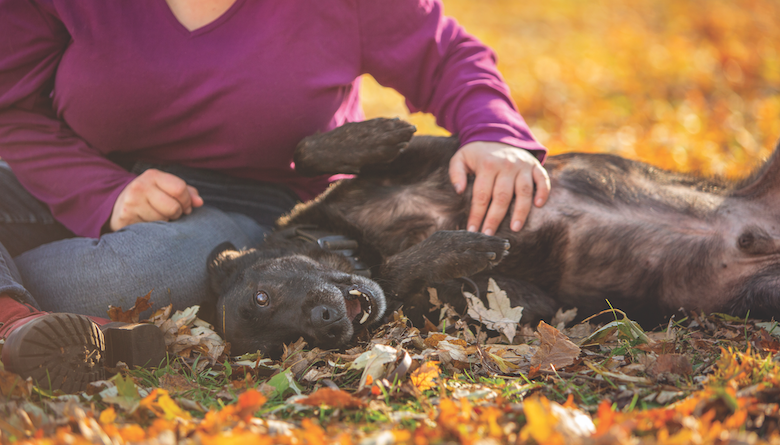3 Ways to Build a Bond with Your Dog
When my daughter Alex was 4 years old, we moved into a new home. The former owners had a friendly German Shepherd Dog that knocked my daughter over with his enthusiastic greeting, causing her to develop a fear of large dogs. This all changed when Sadie the Chocolate Labrador came into our lives.
Related: Why Do Dogs Win Our Hearts?
We were anxious to see how Alex would react to such a big dog, considering how uncomfortable she had been around others, but her fear dissipated when she met Sadie. Almost immediately, Alex developed a deep bond with her big, brown dog that lasted until Sadie’s death 11 years later. I have always marveled at how quickly the bond grew between a child who was scared of large dogs and a goofy Labrador.
Years later, Alex told me that she and Sadie became good friends because Sadie made her feel safe, and that feeling of safety and trust created a strong emotional attachment between them. This kind of emotional bonding occurs in many human-animal relationships and is further strengthened by feelings of affection and a desire to care for and protect each other.
Considering that we are two very powerful predatory species, it is really quite remarkable that we bond at all, but the fact that humans and dogs can live together in relative harmony is a testament to the amazing abilities of both species to adapt, and this vital evolutionary trait is what makes the relationship we have with each other so extraordinary.
Building a bond with your dog
In today’s Western culture, evidence of social bonding with dogs is very obvious. We call them our children and refer to ourselves as their moms and dads. We celebrate our dogs’ birthdays and buy them presents. We spend thousands of dollars a year on food, supplies, clothes and services, and we post pictures of our dogs on social media and fight hard against their mistreatment.
So how do you develop a bond with a new dog or strengthen the bond you have with an existing dog? The first few weeks you spend with your dog will help her form an impression of you that will last for the rest of her life, so how you behave will influence how she responds toward you.
Play it up: Building a bond with your new dog through play right at the beginning, for example, is more important than teaching her cues such as “Sit,” “Come” and “Stay,” because team activities that don’t rely on “I say, you do” interaction builds stronger positive associations. If your dog is playful, play the games she loves. If your dog loves smelling things, take her out to walk and sniff. The more your dog associates you with pleasant and fun things, the more she will want to be with you.
Cuddle for chemicals: Building a bond also relies on certain chemicals that ensure social bonding. When your dog gazes at you with his big, brown eyes, greets you excitedly at the end of the day and snuggles next to you when you sleep, you will both experience a surge of oxytocin, also known as the bonding hormone. Oxytocin is responsible for feelings of attachment and love, and scientific studies have demonstrated that both species experience a surge of oxytocin when they are together.
Empower your dog: All animals need to feel safe and secure, and you can build a stronger bond by ensuring your dog has a degree of autonomy and predictability in her life. It’s very hard to negotiate an ever-changing world when you do not understand what is going on or when you have no power to change it. When you were a child, it was up to your parents to help you understand the world around you, and to live successfully within it even when you experienced stressful situations.
Advocate for your dog as a parent advocates for their child by avoiding stressful situations or environments that overwhelm her. Learning more about how your dog perceives the world, and allowing her at various times to experience life on her terms, not only promotes confidence but helps social bonding. For example, if it is safe to do so, let your dog lead the way on an on-leash walk and take you where she wants to go. It might seem like a small thing, but this simple exercise can be incredibly empowering for dogs who usually do not have much say over what they do.
At its root, building a bond with your dog is about making sure you both trust and feel safe around the other, which is why the bond between Alex and Sadie was so strong. There was an unspoken trust between them because they both knew that neither one would ever do anything to hurt the other.
This is the foundation of all connections, whether they are human to animal, human to human or animal to animal. If we trust our dogs, our dogs will trust us, allowing us to forge an unbreakable bond that lasts a lifetime.
Featured Image: Holly Hildreth Photography
Read Next: 3 Indoor Dog Games to Play When You’re Stuck Inside




